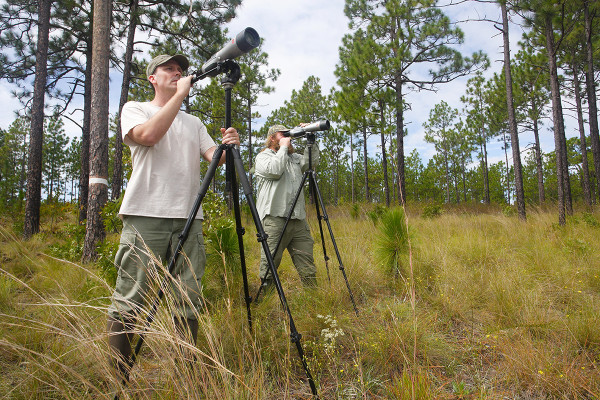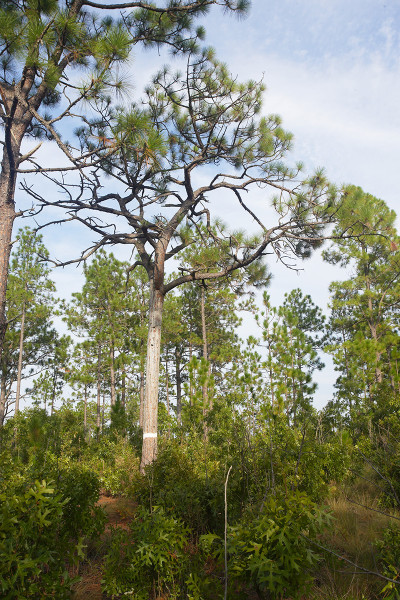Biologists prepare for historic woodpecker move
Sharing the story of Hope
September 28, 2015High latitude satellite tracking of migratory plovers
September 30, 2015
Biologists from several agencies and organizations have come together to make preparations for a historic woodpecker translocation. The U.S. Fish and Wildlife Service, Virginia Department of Game and Inland Fisheries, North Carolina Department of Transportation, The Nature Conservancy, The Center for Conservation Biology, and J. Carter & Associates have all joined forces in a coordinated effort to move red-cockaded woodpeckers to the Great Dismal Swamp National Wildlife Refuge. The effort has been years in the making and will attempt to establish a new population of the federally endangered woodpecker on the refuge.
Video of one of the young males within the Carolina Sandhills National Wildlife Refuge that has been chosen to be moved to the Great Dismal Swamp National Wildlife Refuge. In the video clip, this bird is working to maintain resin wells. Also seen is a standard artificial cavity insert. Video by Bart Paxton.
Virginia represents the northern range limit for the red-cockaded woodpecker and since the early 2000s the state population has been restricted to a single breeding site (Piney Grove Preserve). Intensive habitat management by The Nature Conservancy and population management by The Center for Conservation Biology have brought this population back from 2 breeding groups in 2002 to 14 breeding groups by 2014. However, concentration of all birds within a single site makes the population vulnerable to a catastrophic event. Establishment of additional breeding sites has been included in the Virginia red-cockaded woodpecker conservation plan for several years.

Mike Wilson (left) and Fletcher Smith (right) use spotting scopes within Carolina Sandhills National Wildlife Refuge to identify individual birds by their unique combinations of color bands. Several woodpecker biologists converged on the refuge during the week of 21 September to locate chosen birds and to determine which trees they were using as roosts in preparation for capture and translocation. Photo by Bart Paxton.
Efforts have been ongoing for an extended period of time to prepare for the move. Areas within the Great Dismal Swamp have been identified and managed to receive the birds. Due to the unique requirement of this species for old-growth pine, sites that support adequate cavity and forage trees have been delineated. Because the species excavates cavities in live pines, a process that may take months to years, artificial cavities have been installed to assist the birds until they may produce their own. Finally, individual birds have been identified and located within “donor populations” for movement. Fall represents the normal dispersal period for this species and young-of-the-year males and females will be moved in an “assisted dispersal” to the refuge. Four potential breeding pairs will be moved to “recruitment clusters” that have been prepared to receive them in October.

Typical red-cockaded woodpecker cavity tree within the Carolina Sandhills National Wildlife Refuge. Note the characteristic resin flow that the species maintains as an anti-predator strategy. Photo by Bart Paxton.
Moving a species with such specialized requirements is a process that has many moving parts. This effort would not be possible without the collaboration of many great people and institutions that are dedicated to woodpecker recovery.
Written by Bryan Watts | bdwatt@wm.edu | (757) 221-2247
September 29, 2015



